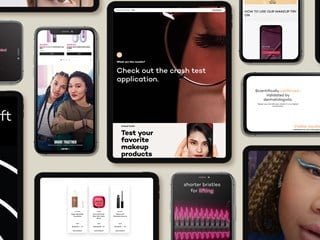dezembro 13, 2019
The biggest names in retail risk a fall from grace unless they keep pace with changing customer behaviors; no one is too-big-to-fail in this market.
For retailers in today’s digital-first world, experience is everything. We’ve talked a lot in the past about the power of seamless physical-digital transactions, removing friction from every touchpoint and innovative ways to take customers from browsing to buying whether they are in-store or online.
But it’s clear that there are relatively few ways for these giants of the industry to differentiate themselves, and that’s why the experience is so important. Now that we aren’t tied to physical stores anymore, the choices available to customers online have exploded. But with increased choice comes a decreased level of patience for the brands that provide underwhelming or frustrating experiences.
The reality is that retailers have one chance to make that first impression count. From in-store experiences like merchandising, staff interactions and check out processes to the online metrics of personalised experiences, filters and digital payment options. If it’s easier for a customer to go elsewhere, they will, and that chance of conversion can be lost forever.
When we talk about digital experiences, we often think in terms of single transactions, but the real success of a retail brand is when customers return time and time again. Brand loyalty is not only a win for the retailer that reaps the financial rewards, but also for the consumers; with each repeat visit providing more data and a better, more personalised experience with each interaction. That sweet spot of perceived recognition is what makes the customer feel valued, understood and unique.
At Sitecore Symposium a couple of weeks ago I sat in on the Commerce Track Keynote from Brendan Witcher at Forrester;
‘Let’s imagine that your fridge is empty,’ he said, ‘so off you head to the store on your street to stock up…. The first store that you come to has everything that you need and at great prices, but as soon as you step inside, you realise they have no shopping carts. You have no choice but to go elsewhere…’
The point is, the consumer is always going to be willing to walk away if they have a bad experience, and there is always going to be another grocery store around the corner. If we take that example and apply online experiences, the opportunity to go elsewhere is literally a click away. That means that retailers need to make sure they are getting it right the first time.
So what actually constitutes a bad experience? Personalisation (or a lack of) is often a big factor. As the buzzword of the retail sector over the last few years, most will claim that they are delivering some form of personalisation, but there’s a high possibility that consumers disagree. Particularly if it’s the first time you visit the site, there are limited chances for the brand to be able to tailor the experience. But, if in your second or (if you make it to a third) visit, there’s still flawed personalisation, it can leave a bad taste. Take another example from Witcher at Symposium, this time regarding yoga pants. Buying workout gear for his wife, he kept the order in his name, cue months of marketing material aimed at his flourishing yoga career.
Brands have the technology available to them to be able to stop things like this from happening, but often it’s a question of making better sense of the data available. There are no excuses anymore; retailers need to learn how to leverage consumer data to deliver better, smarter experiences.
The services that we design and build for clients at Valtech are always designed entirely around the customer. The same applies whether we are working on a government, healthcare or financial services project. User-centred design is the only way to ensure that you are designing services that will work. However, as obvious as that may seem, many brands still fail to recognise the conversation that they need to be having with their customers to truly understand what they need and want.
‘Companies are having a monologue, not a dialogue with their customers,’ said Witcher, and he’s right. It is not worth the risk to deliver something average first time around because you risk losing that customer forever. Putting more work into understanding and valuing your customers early on is the only way to set yourself up for success.
And that cross-sector point is an important one too because it’s no use brands just looking at best in class deliveries within their own sectors. They need to look beyond the boundaries of their own pools and into those of the less obvious competition. We've worked a lot in retail over the last few years, but we were able to apply some of those same principles when Disney approached us about totally redesigning the customer experience of their Haunted Mansion theme park ride. Likewise, we pulled on work in the auto industry to direct our approach with a leading electronics supplier. These insights give us a holistic view of product development and user experiences, but crucially, they also make sure that we are delivering best in class digital services, devoid of boundaries.
Whatever industry you are in, the new normal is digital-first, and companies that fail to respond and adapt risk being left behind. Twenty years ago, we might never have predicted the scale of the financial crisis that hit in 2007/8. We all assumed that the size, weight and experience of the incumbent banking institutions would protect them from disaster. Move on ten years, and we are seeing the meteoric rise of challenger banks like Monzo and Starling bank gaining swathes of the market.
Customers are rejecting the complications and restrictions of the household names for services that better suit their needs and offer frictionless experiences. The same principles apply to the retail industry. The names we all know risk disappearing into oblivion unless they keep pace with customer expectations and deliver experiences that stop consumers from checking out the shiny new competition. For high street giants to survive, the coming months need to be about seamlessly connecting their physical spaces with their online offerings. Digital tools, better enabled assistants and experiential store designs will support them in becoming ‘desirable destinations’ that inspire brand loyalty and keep them front of mind.







